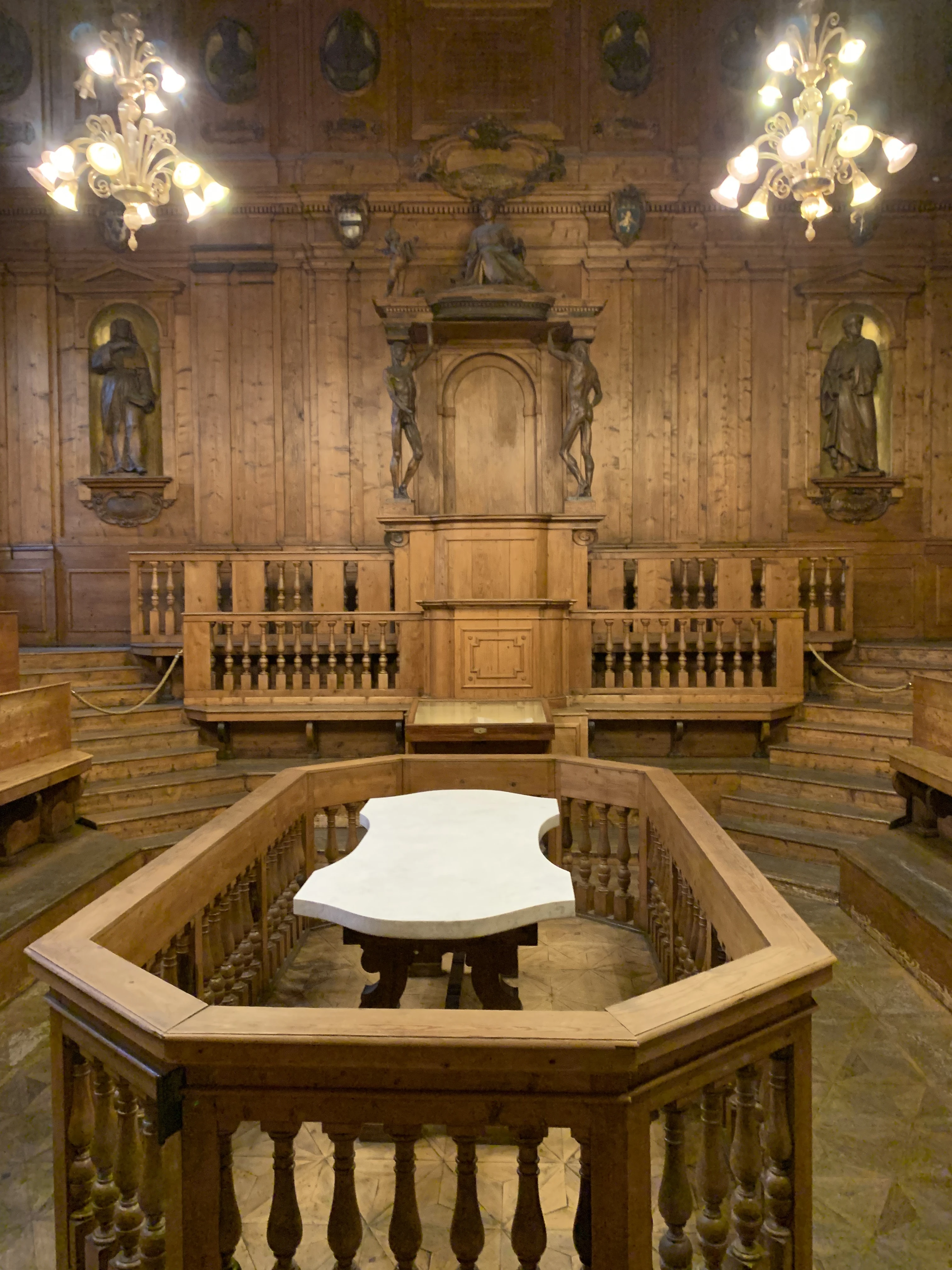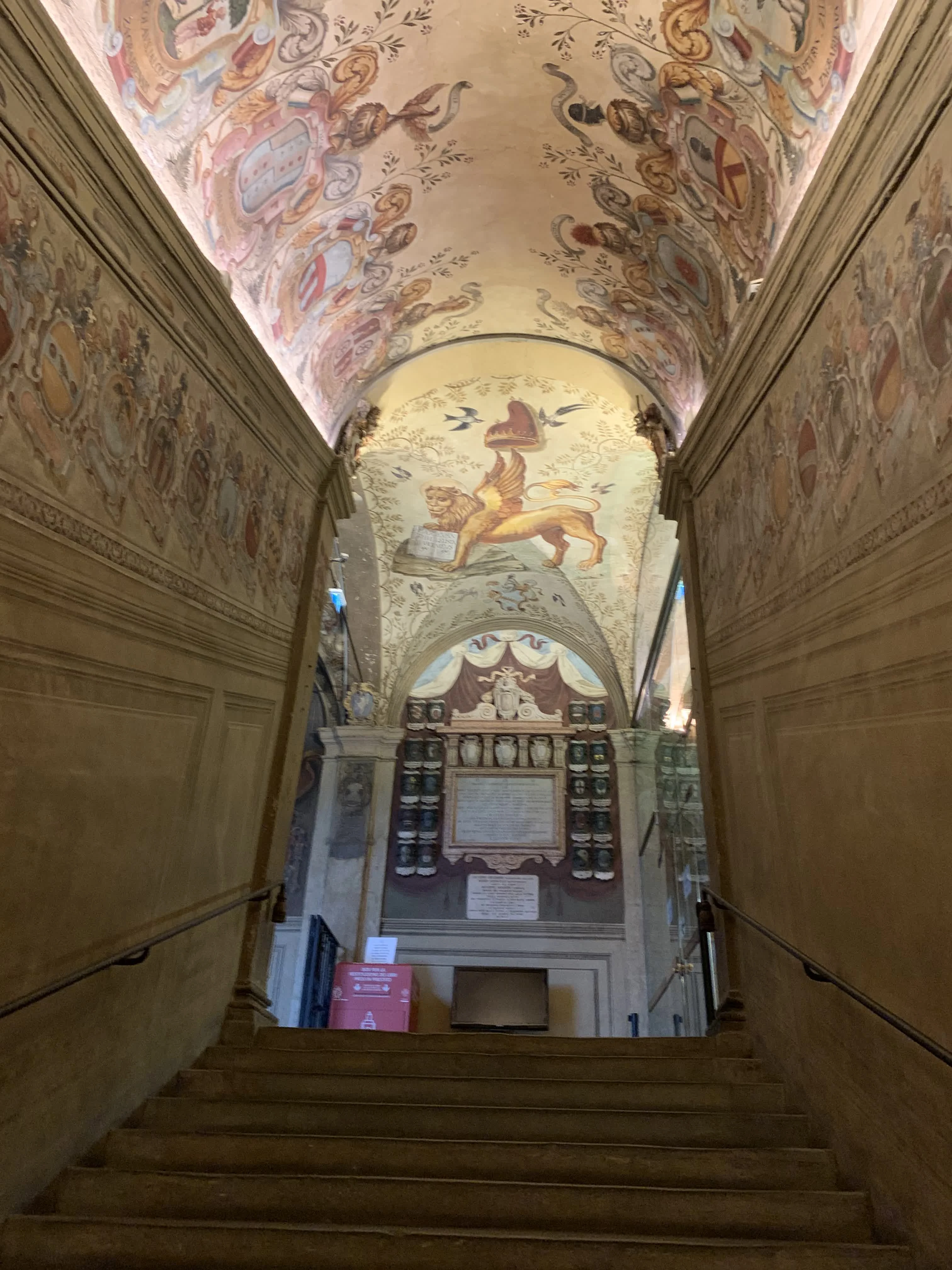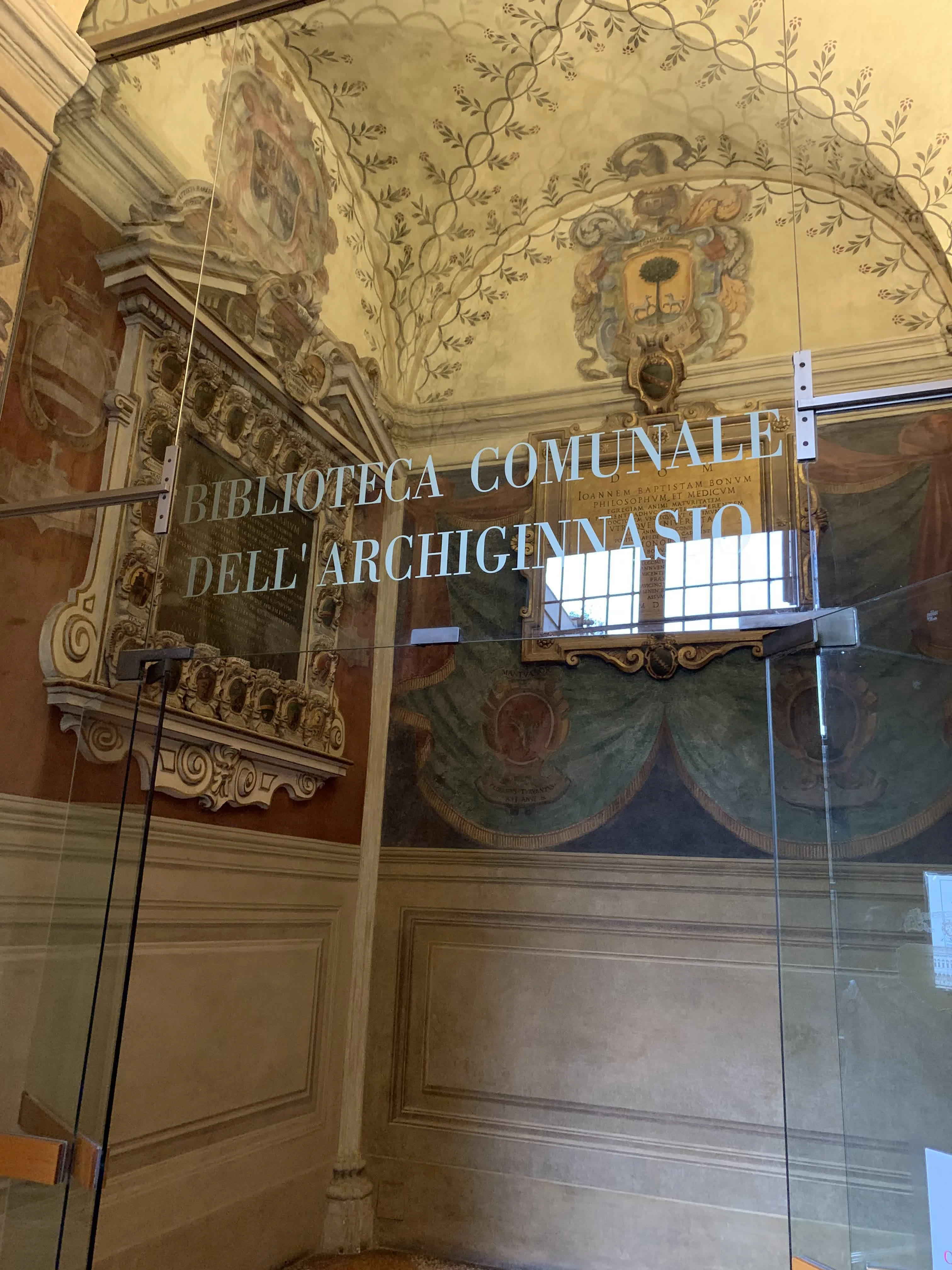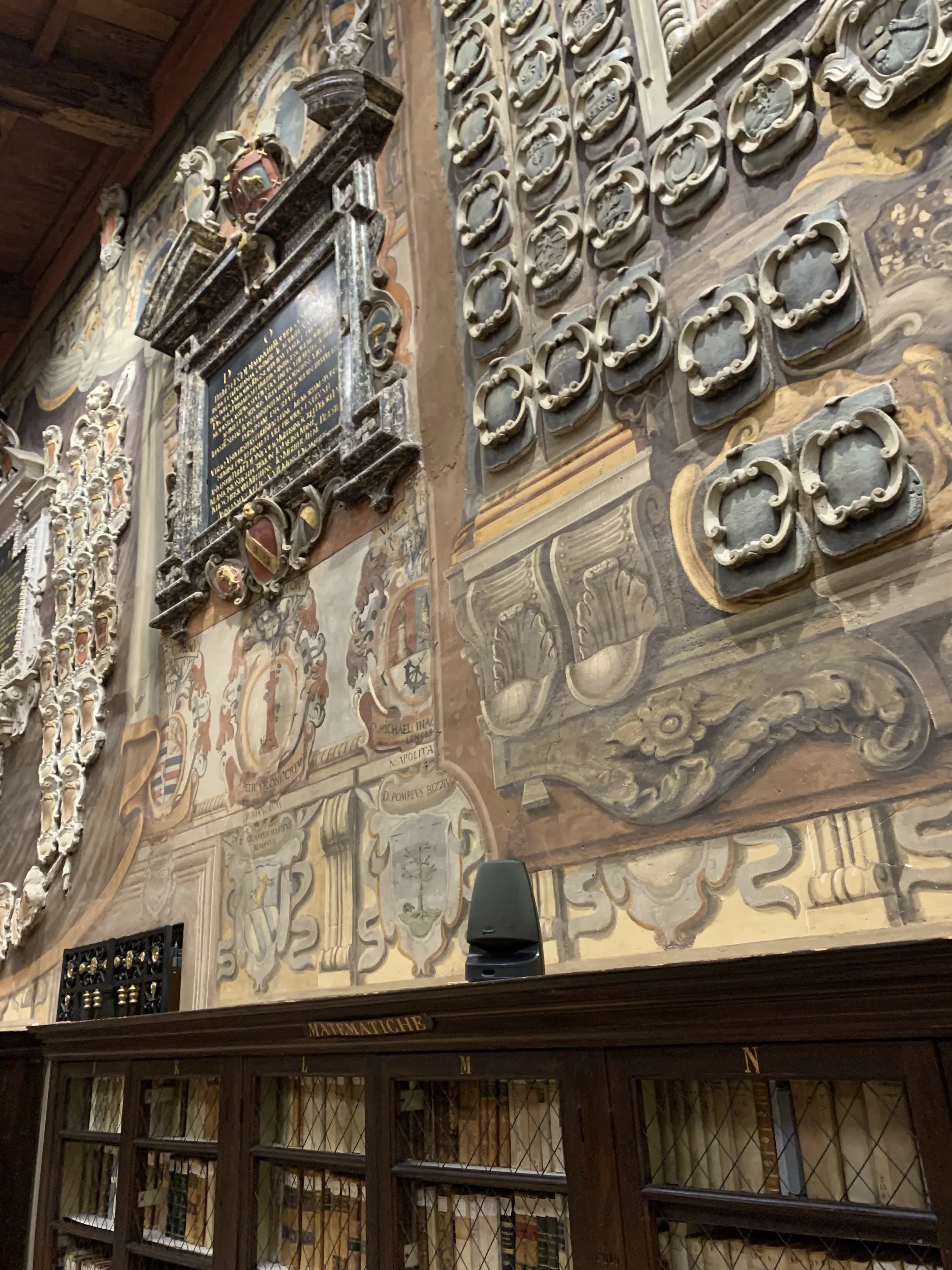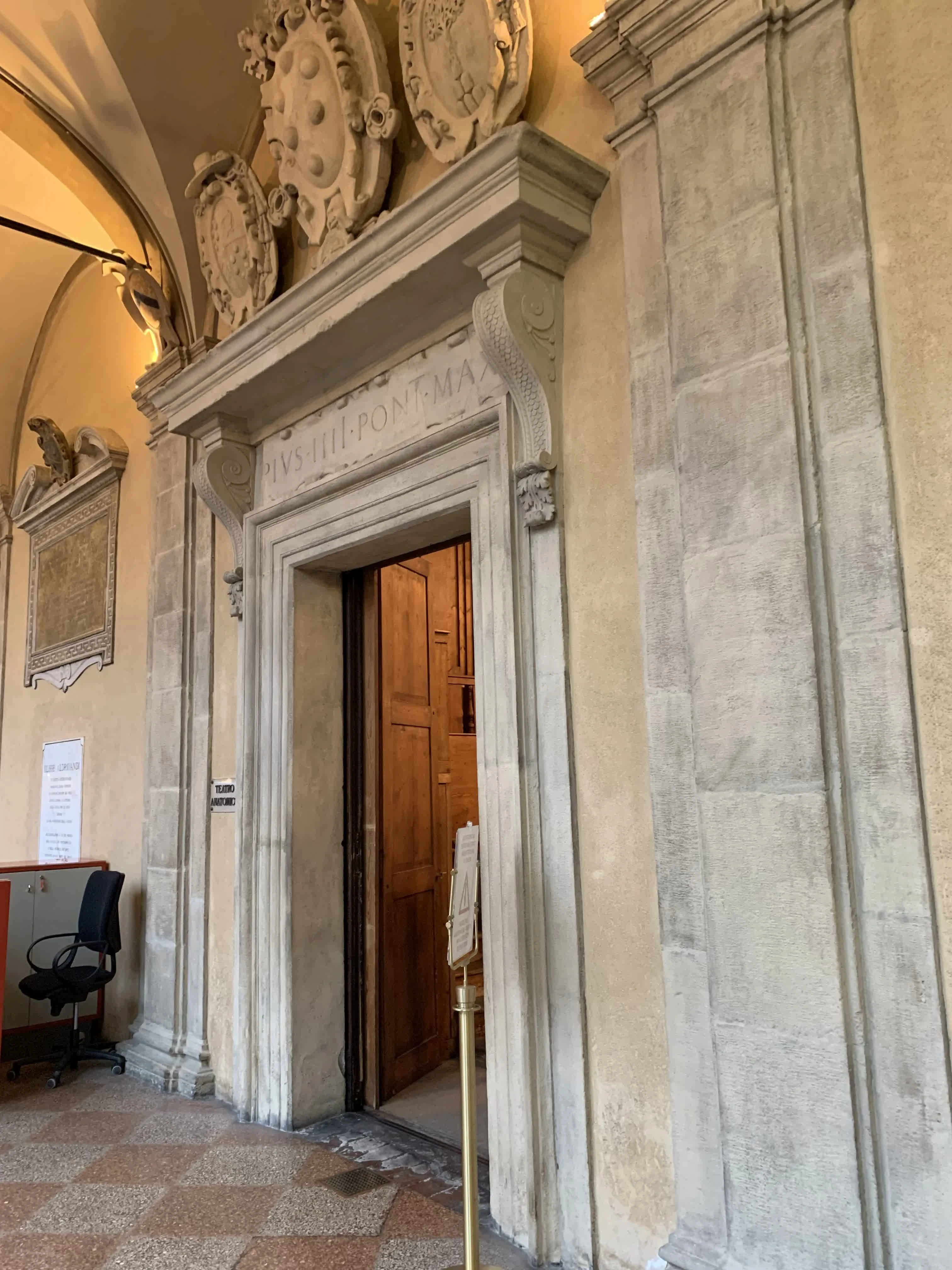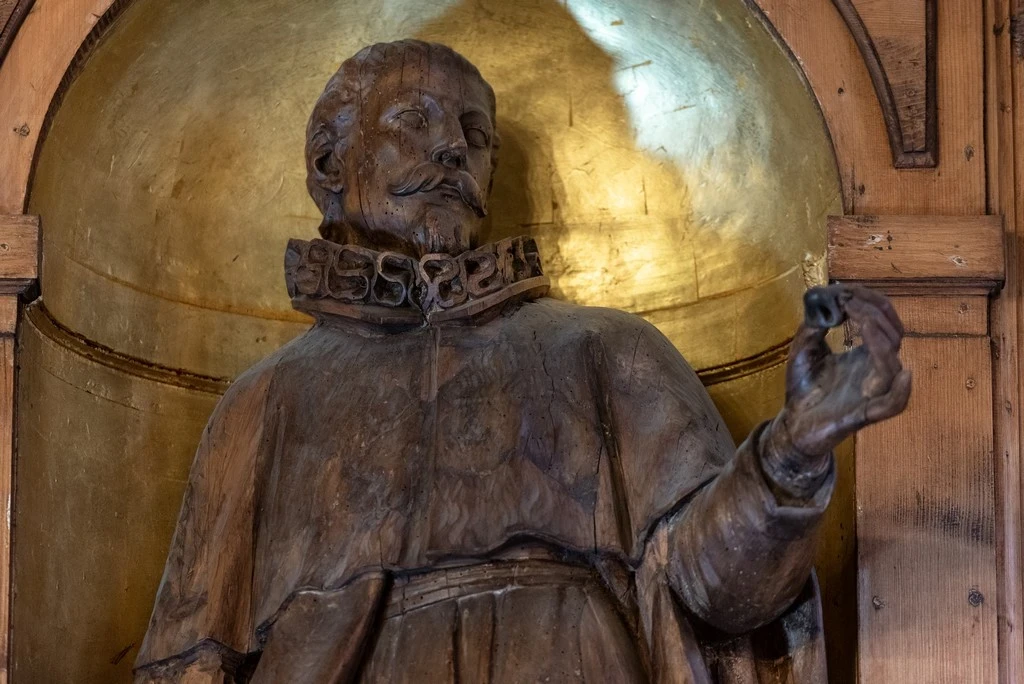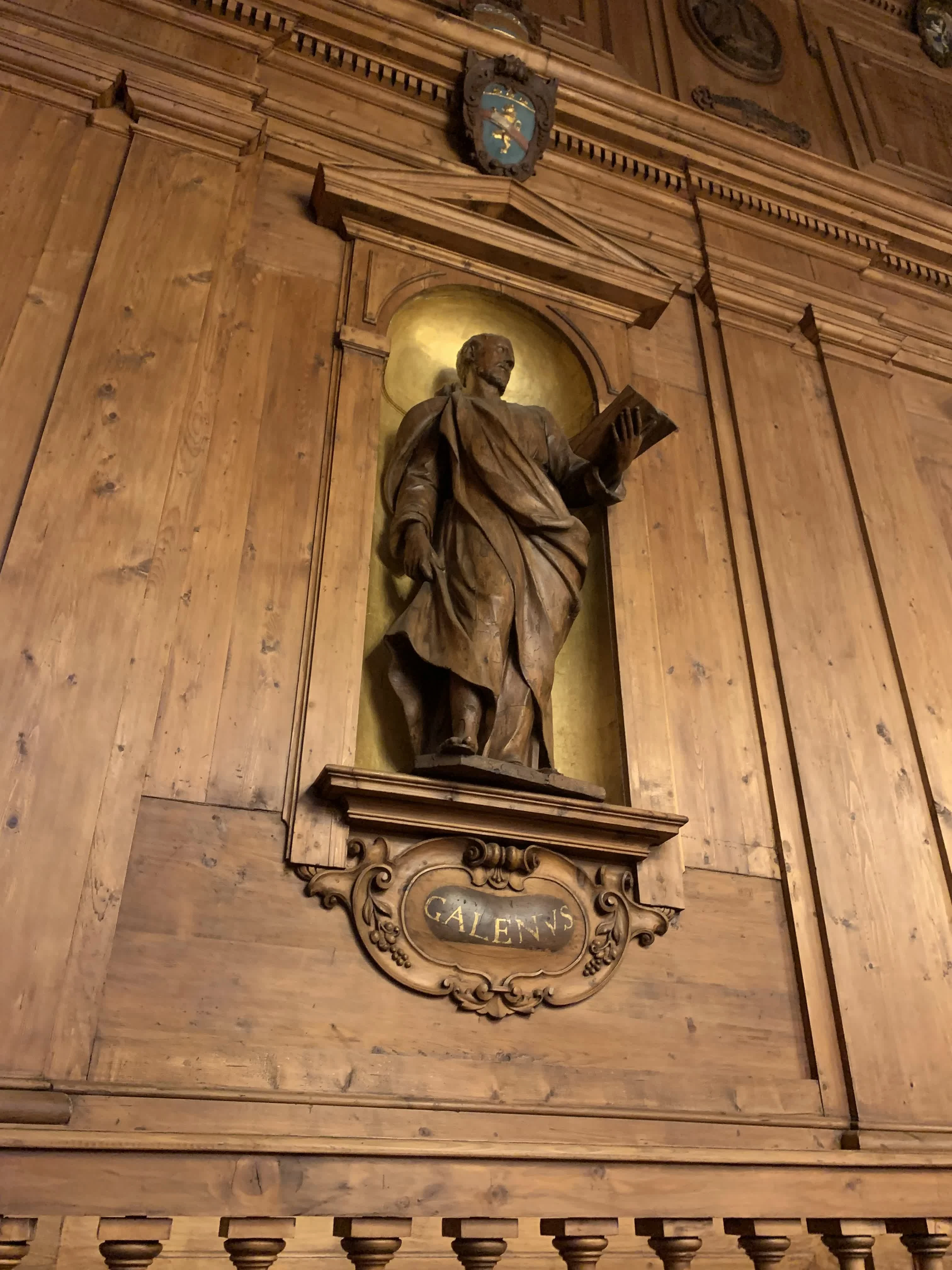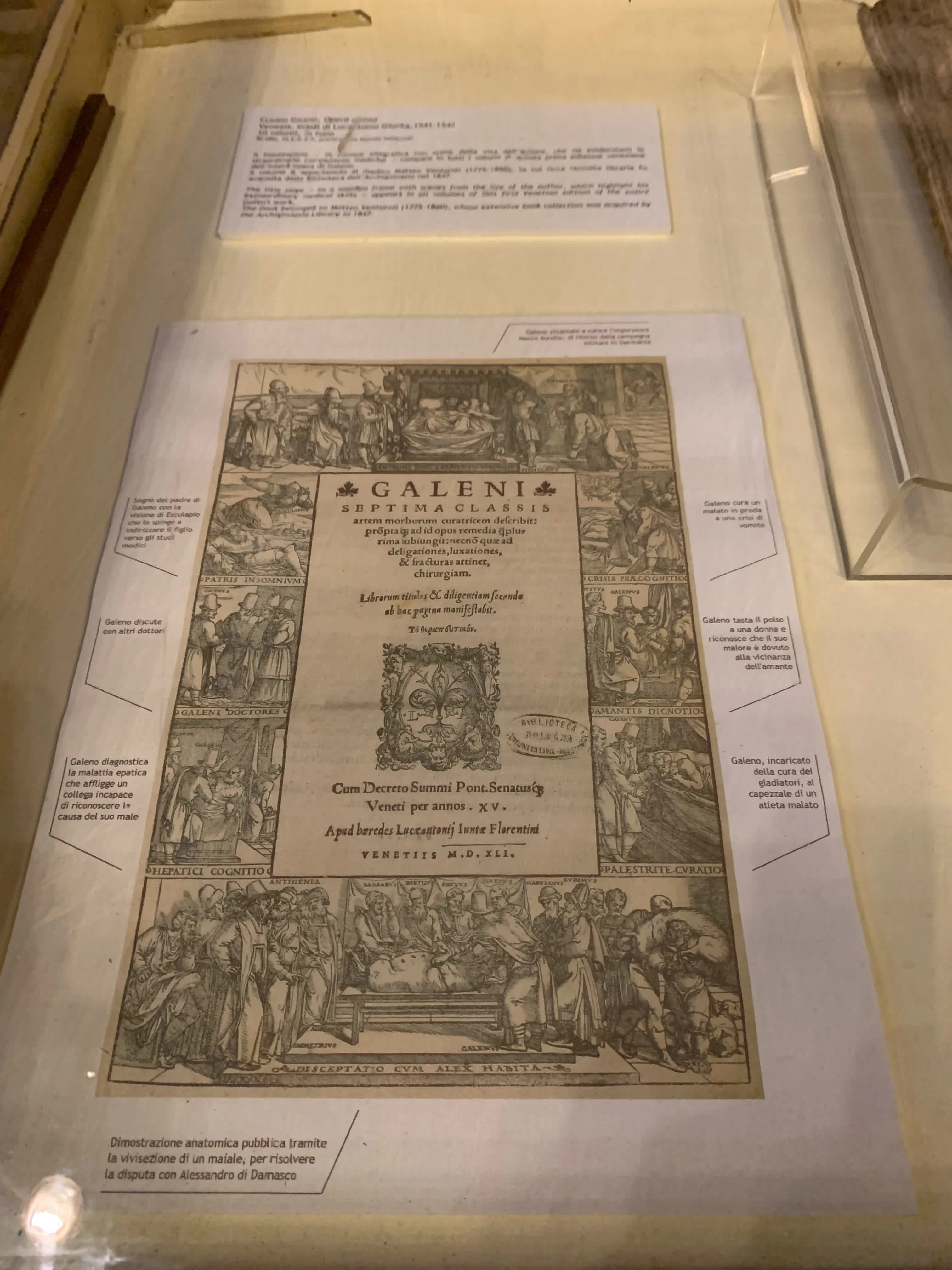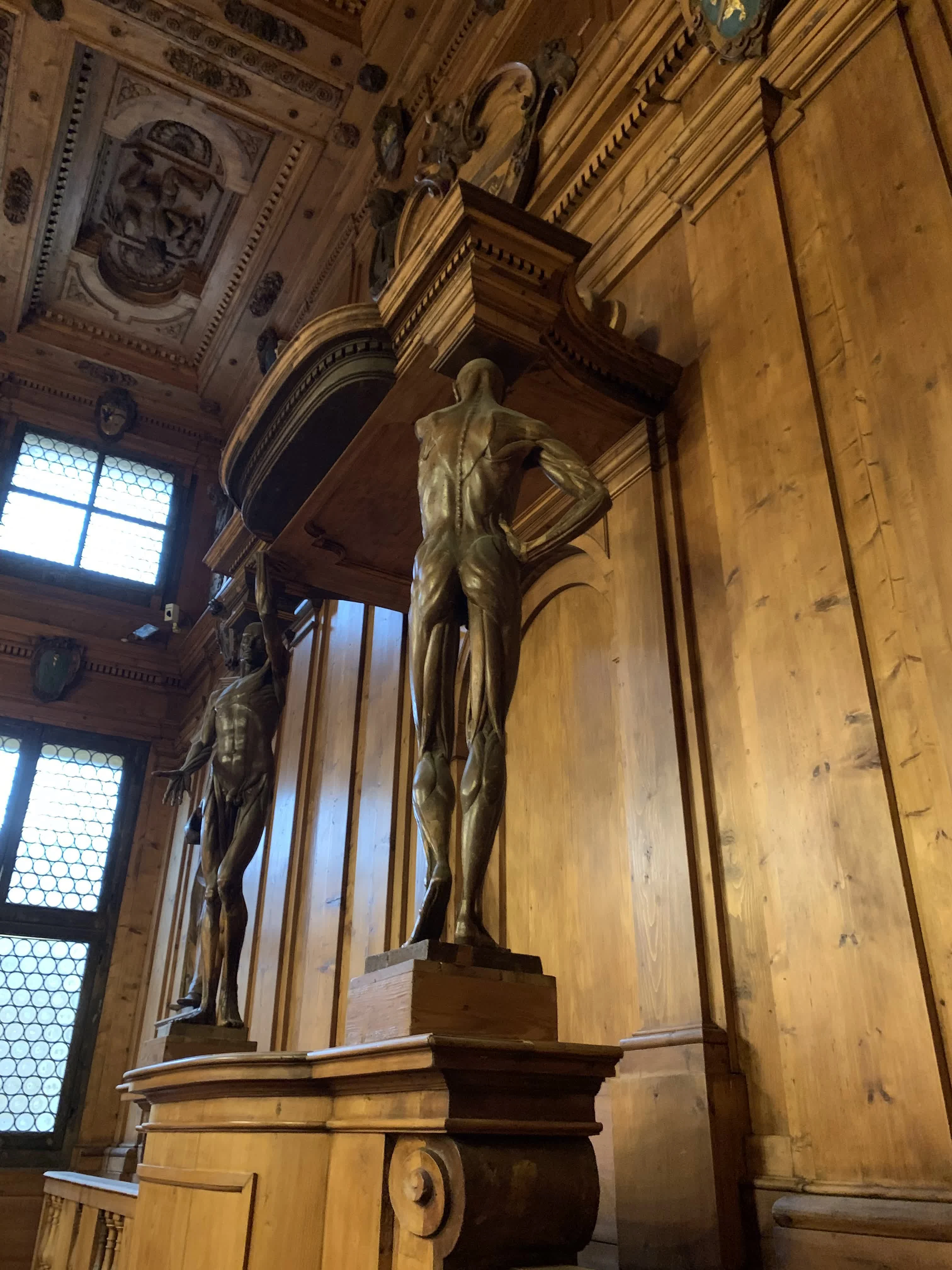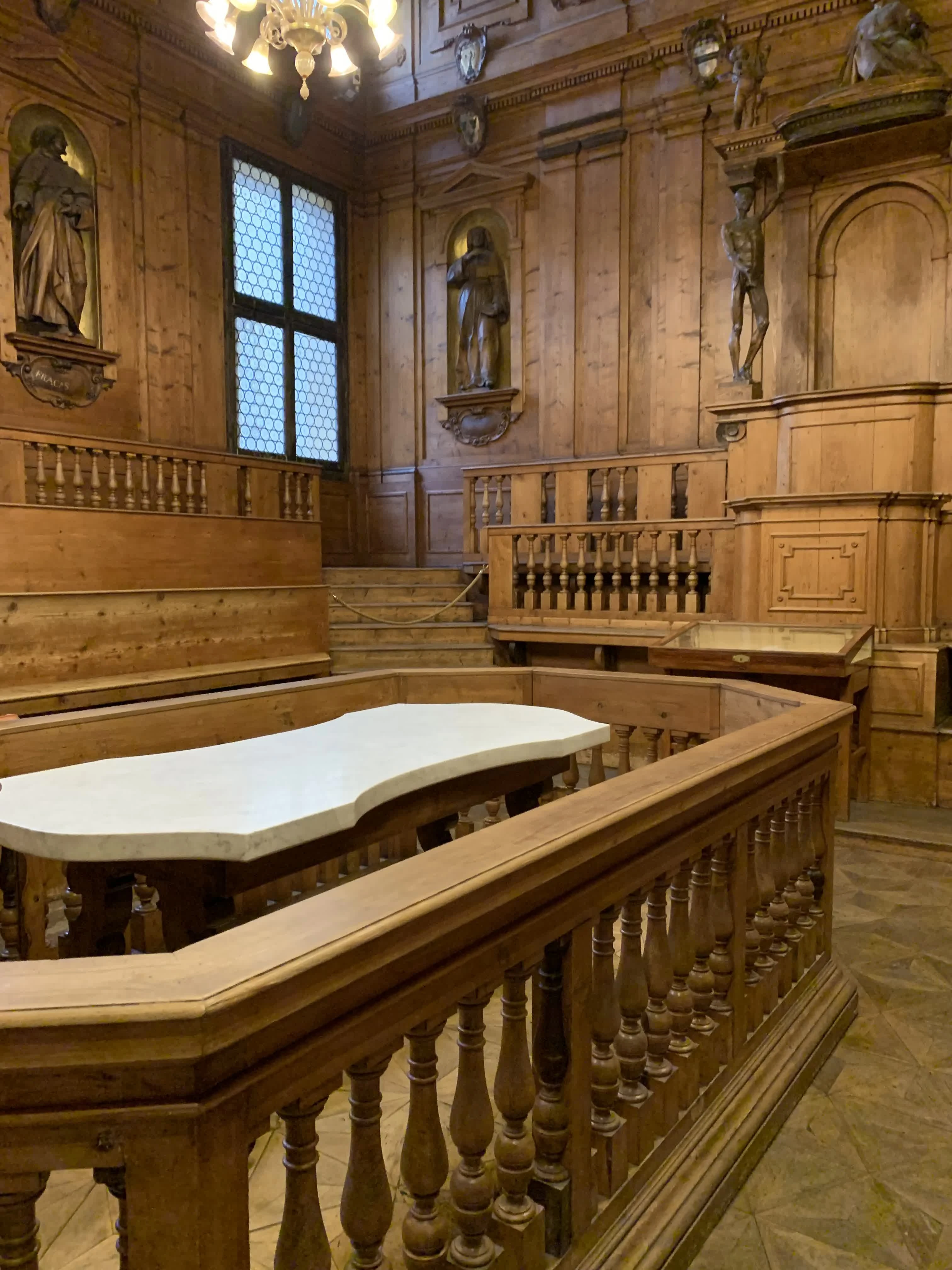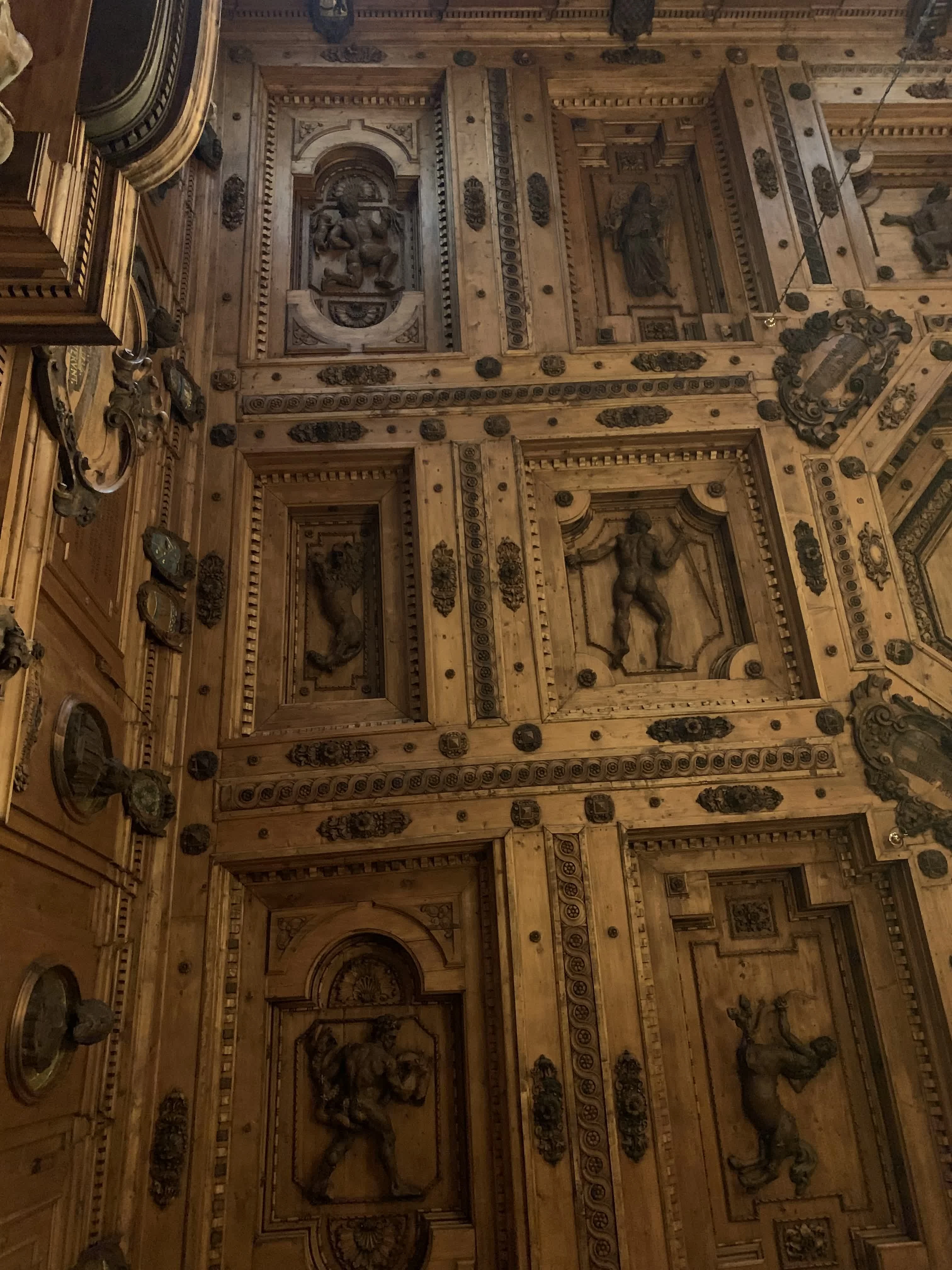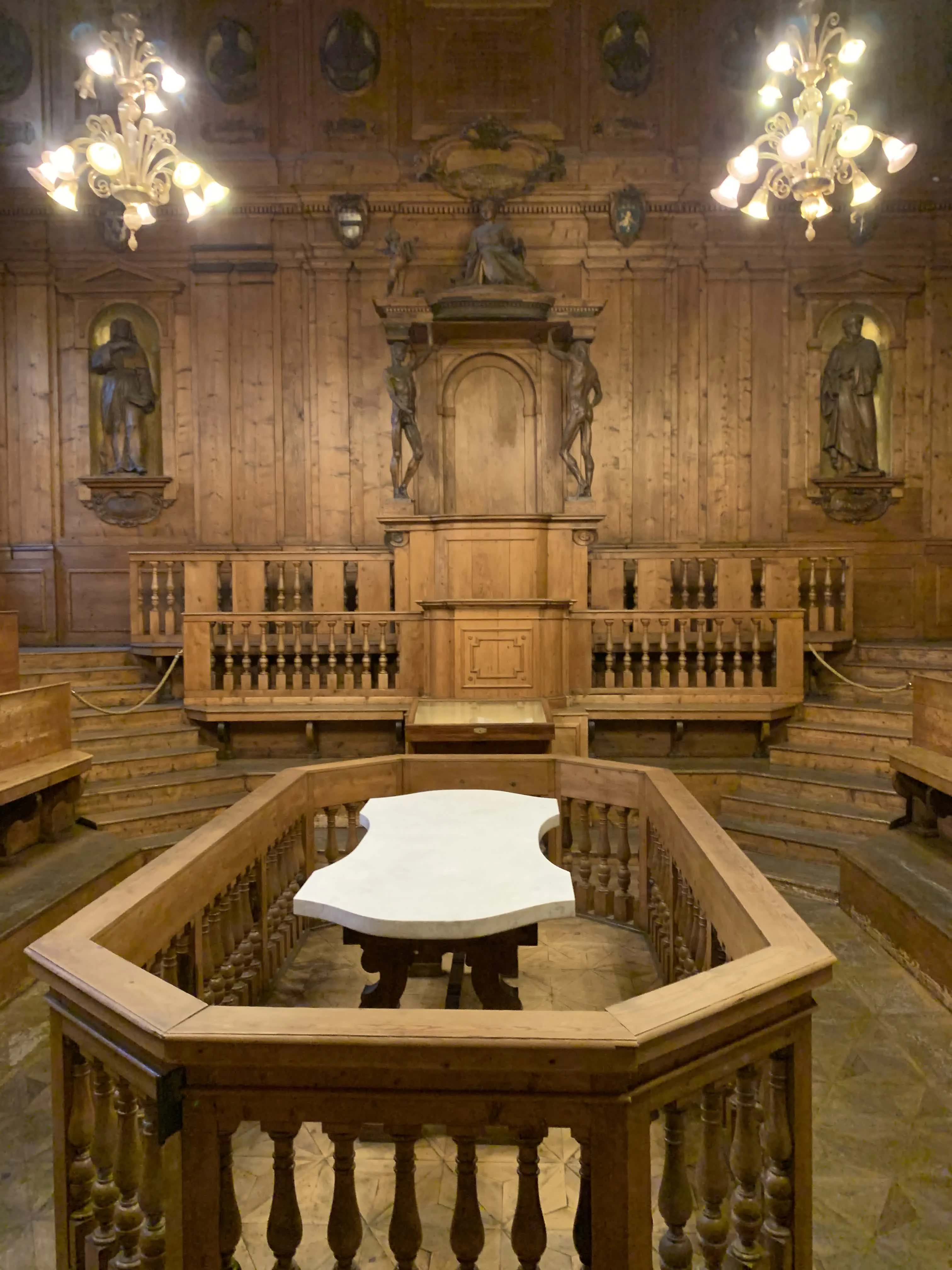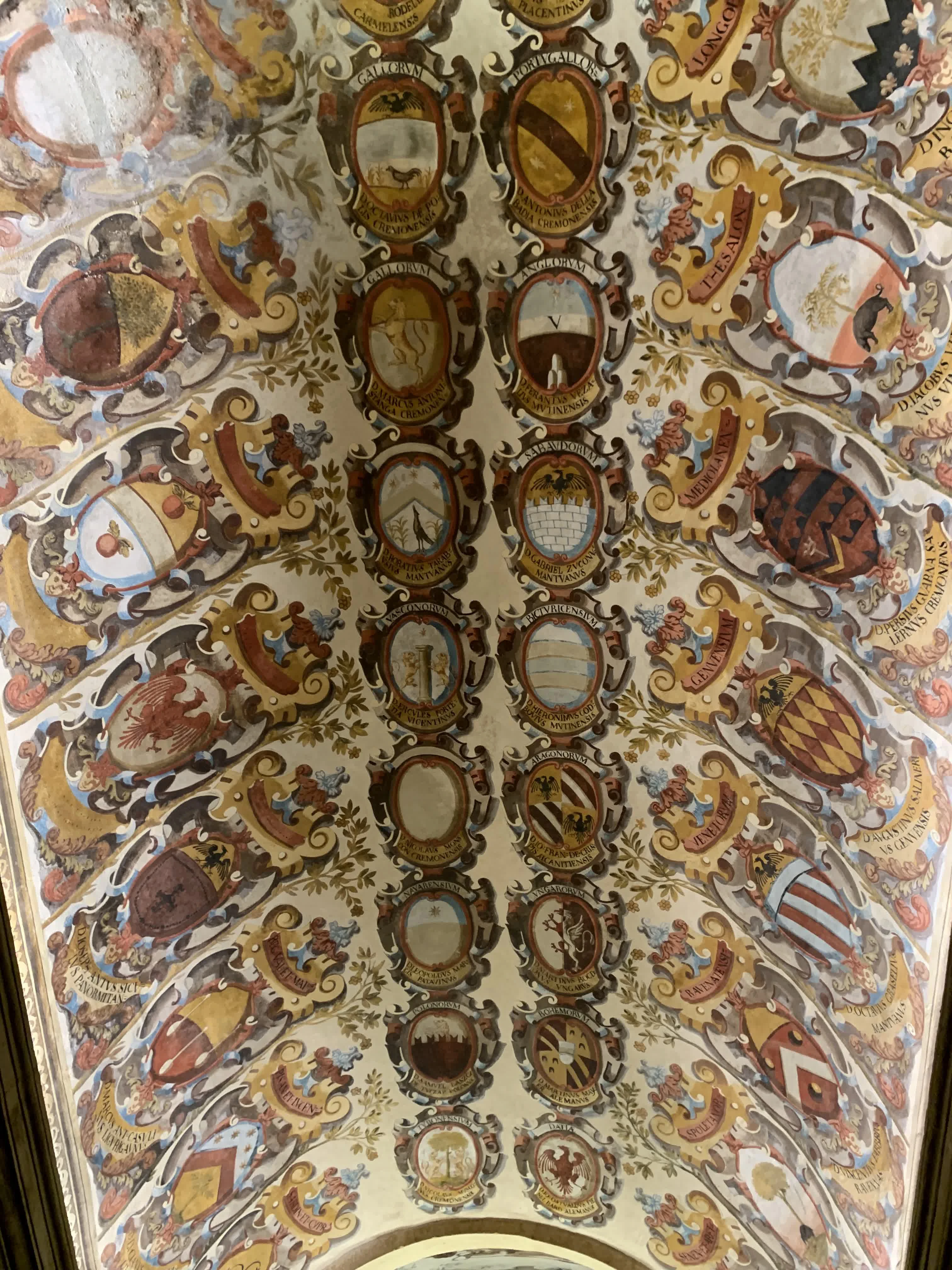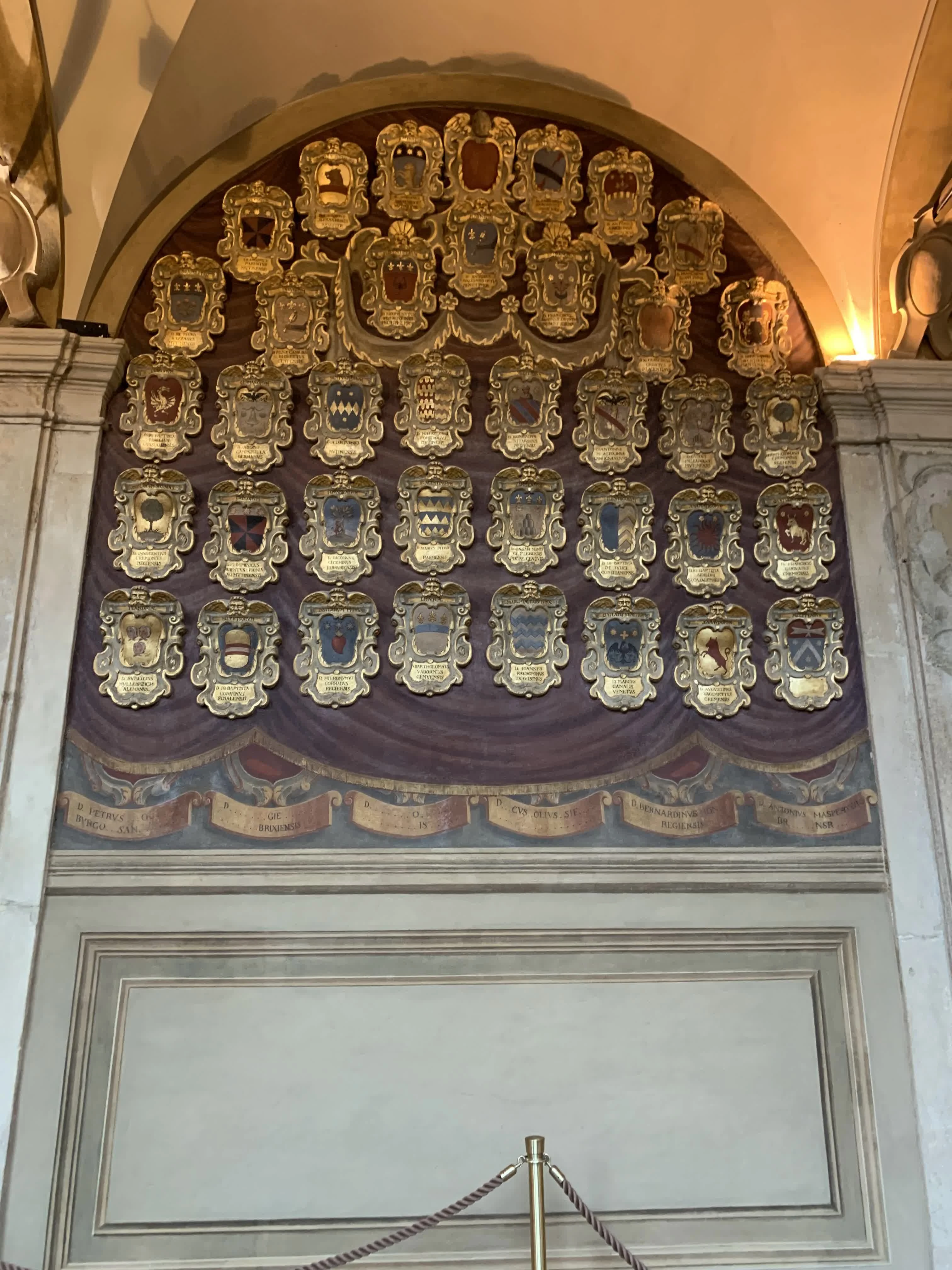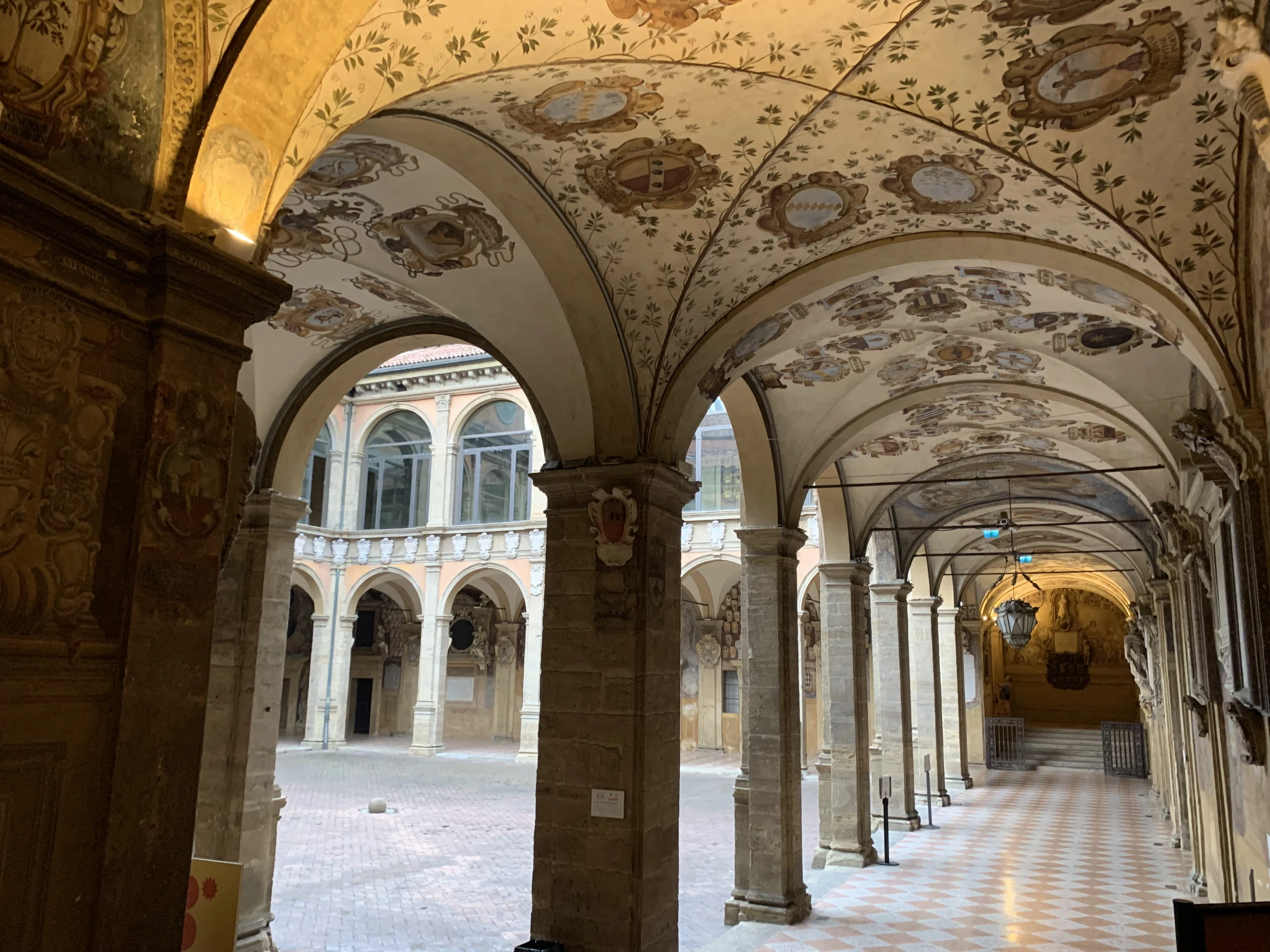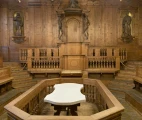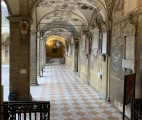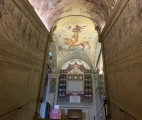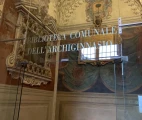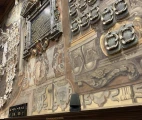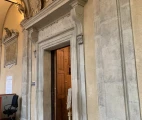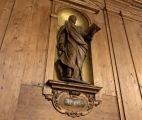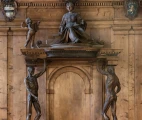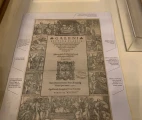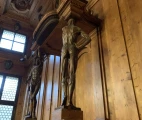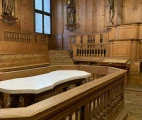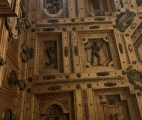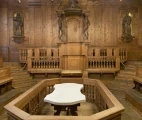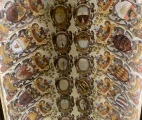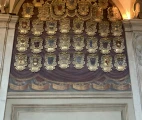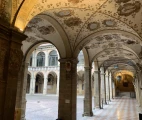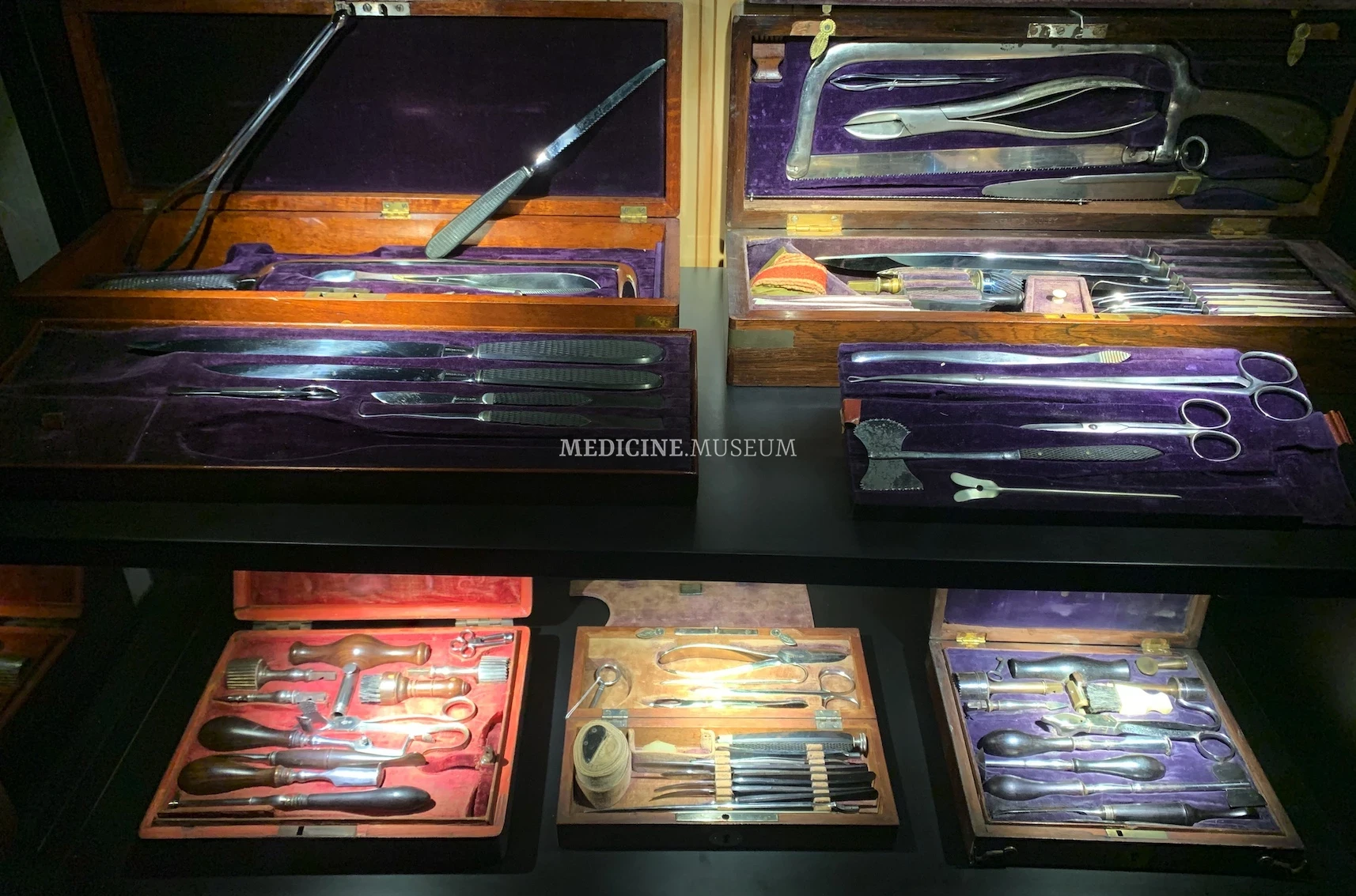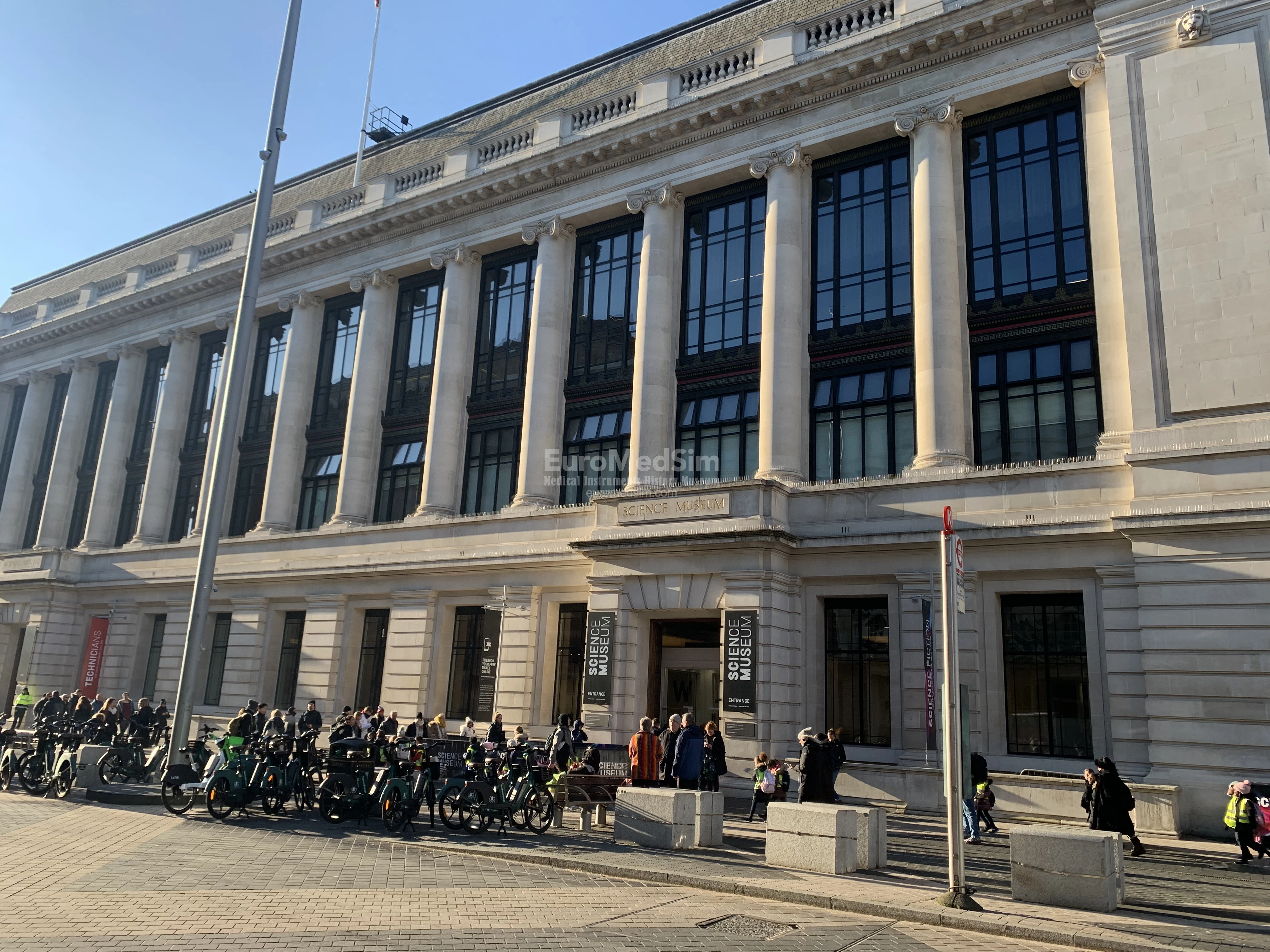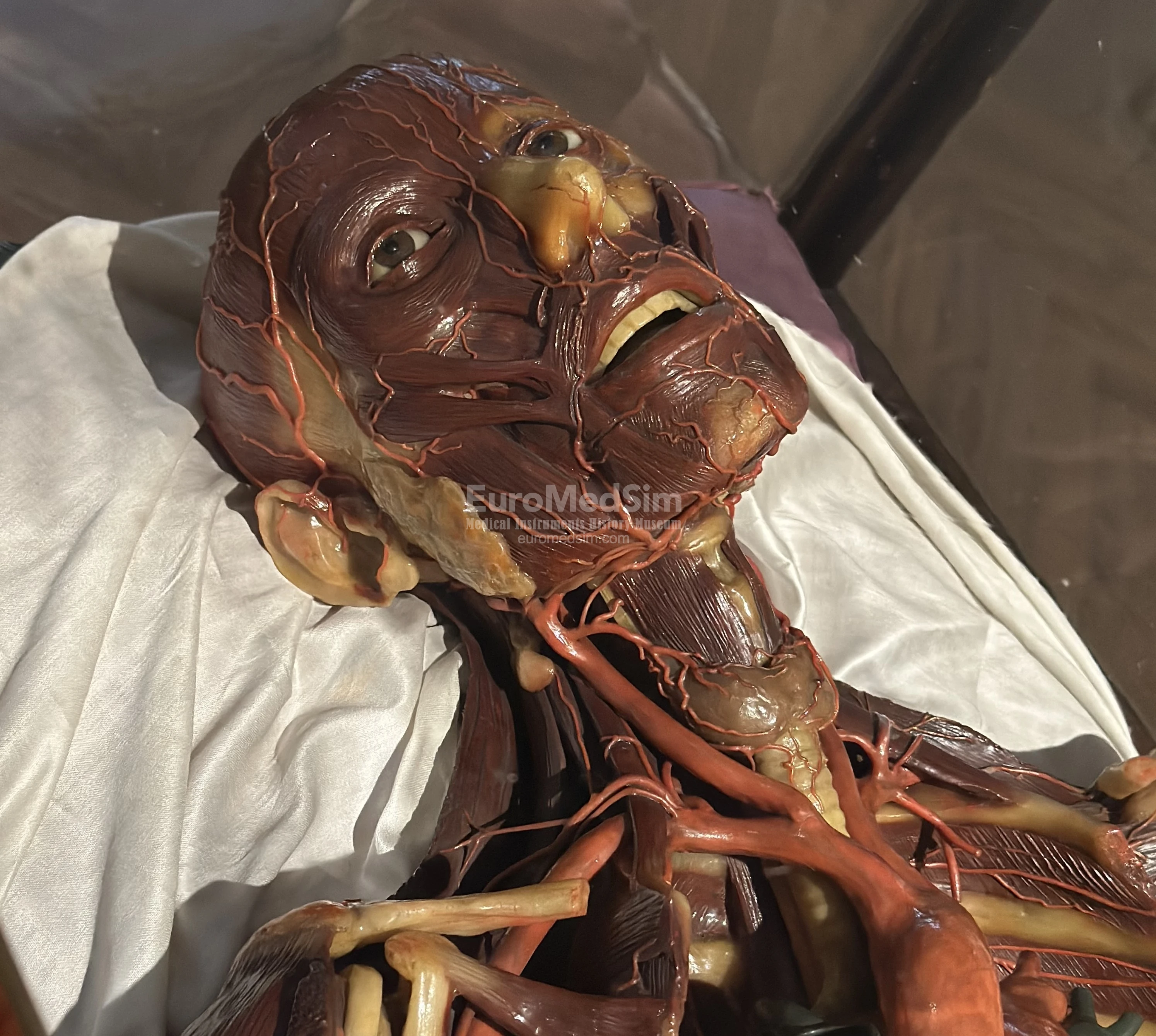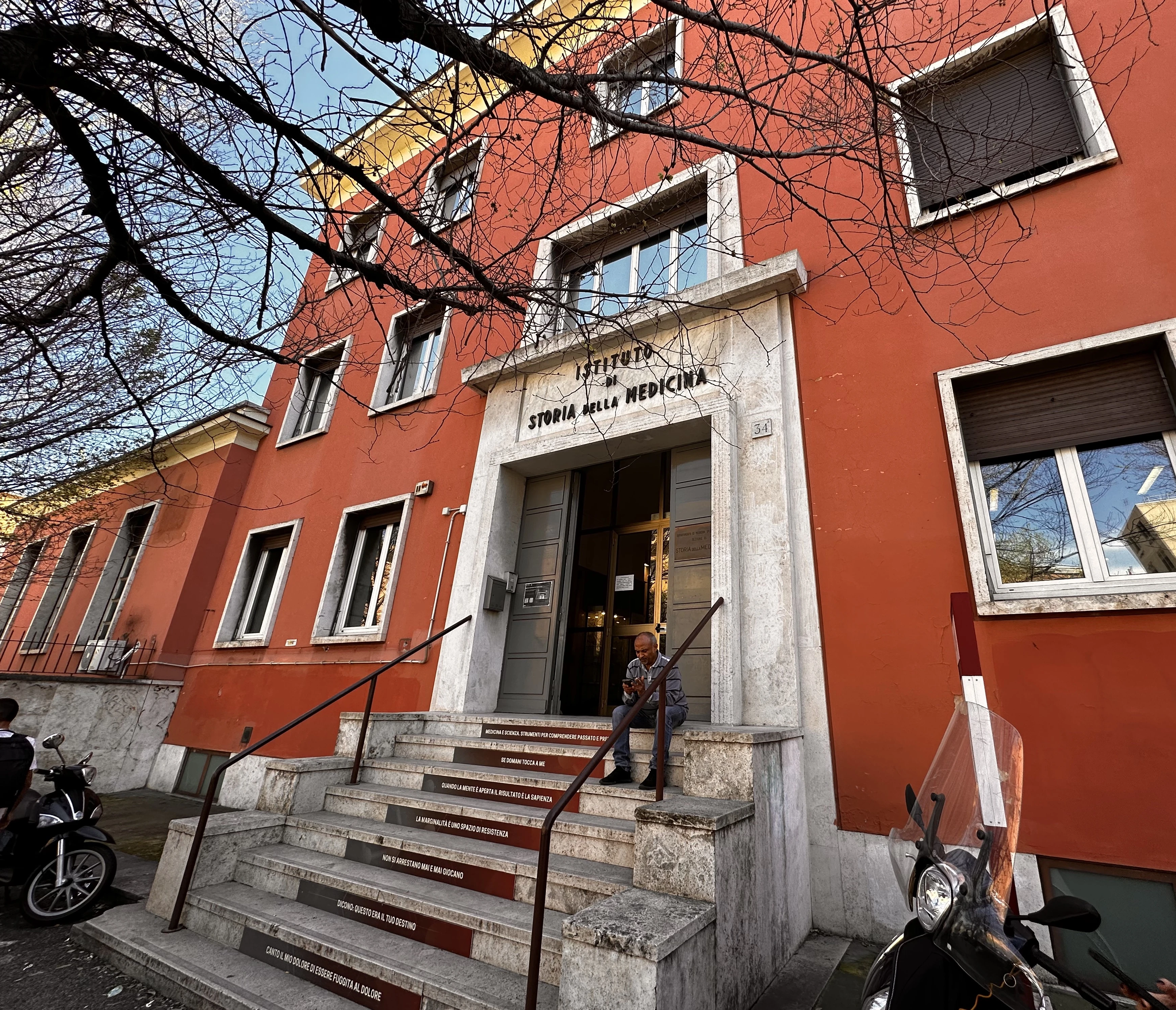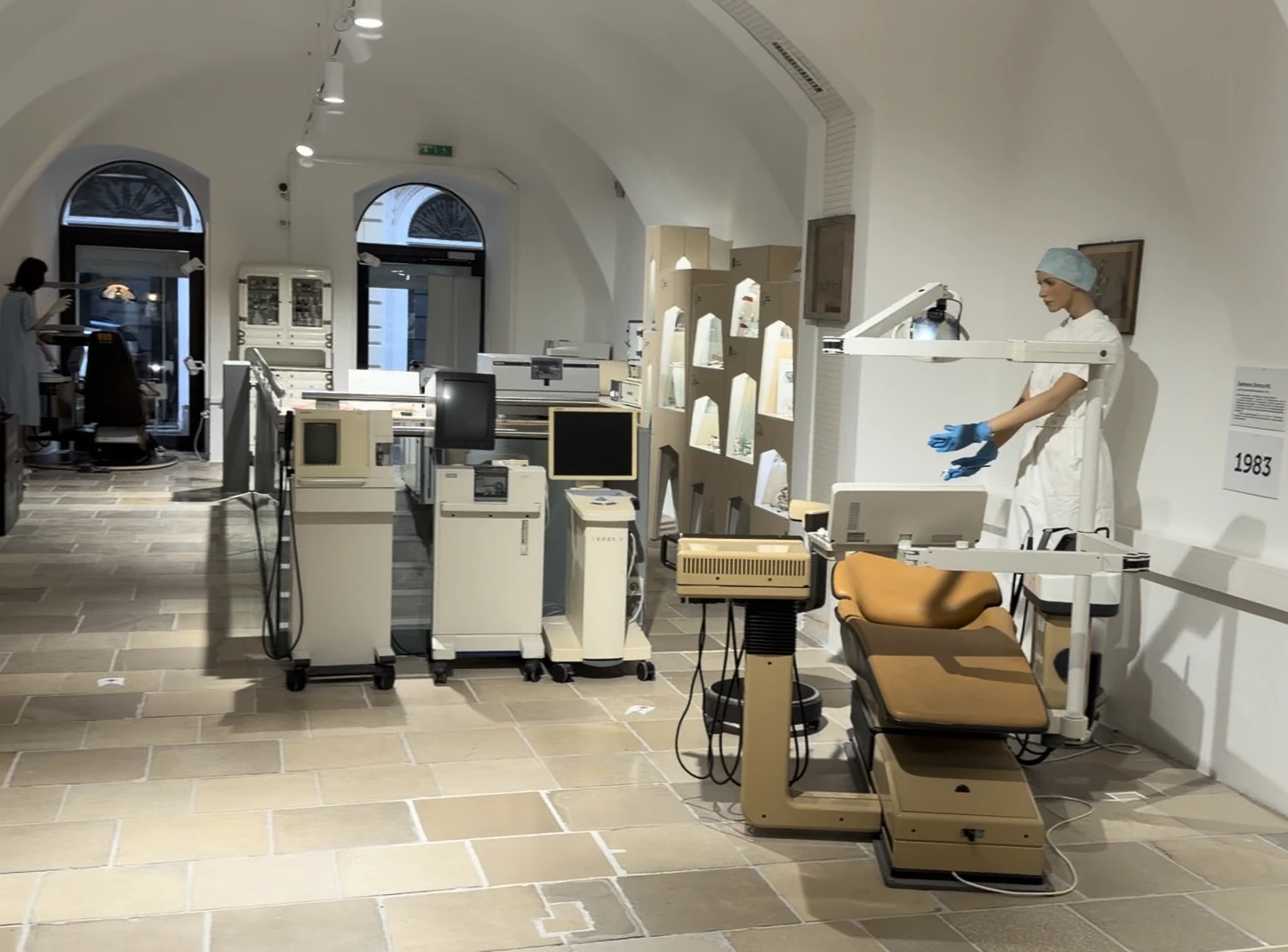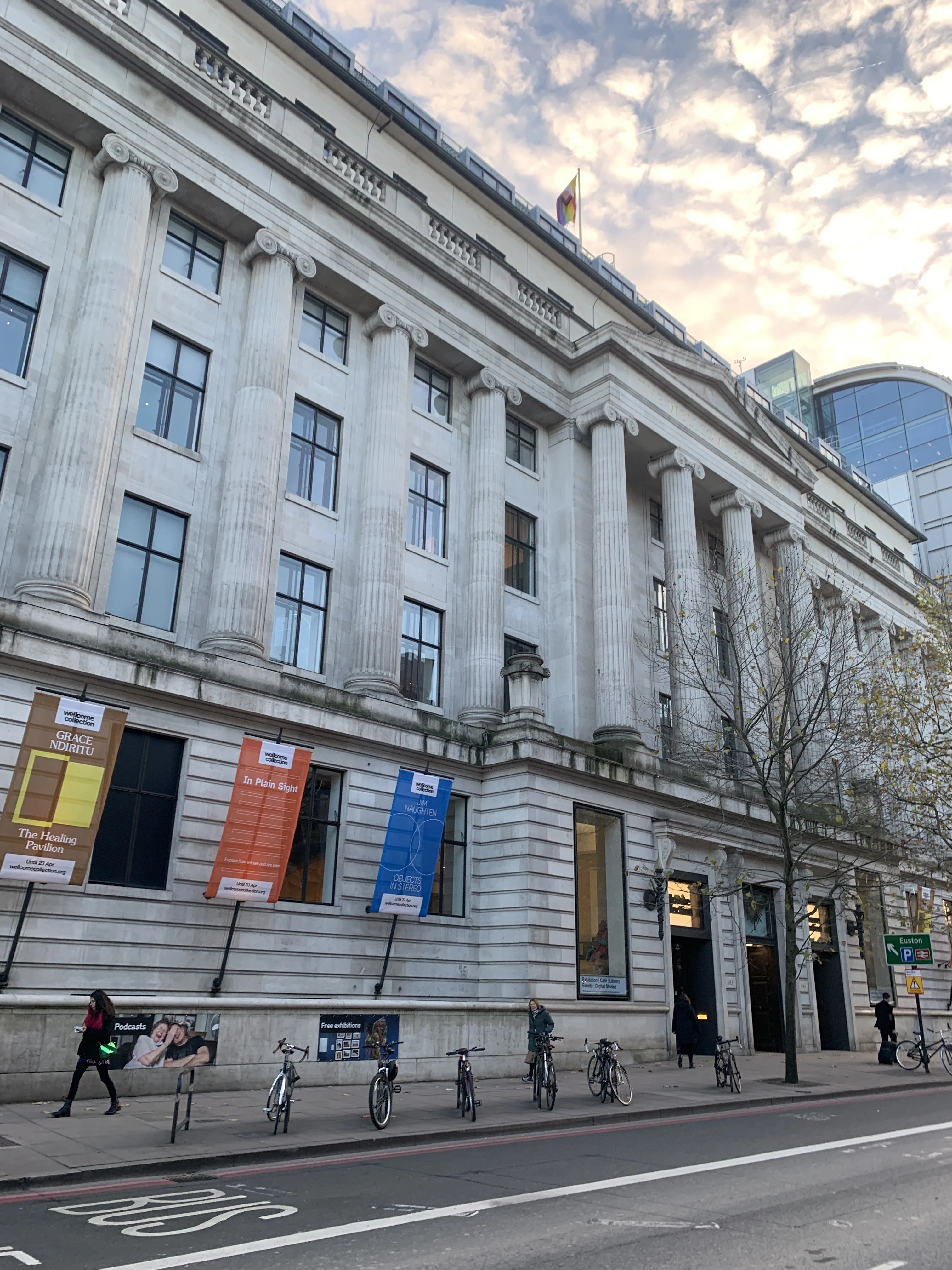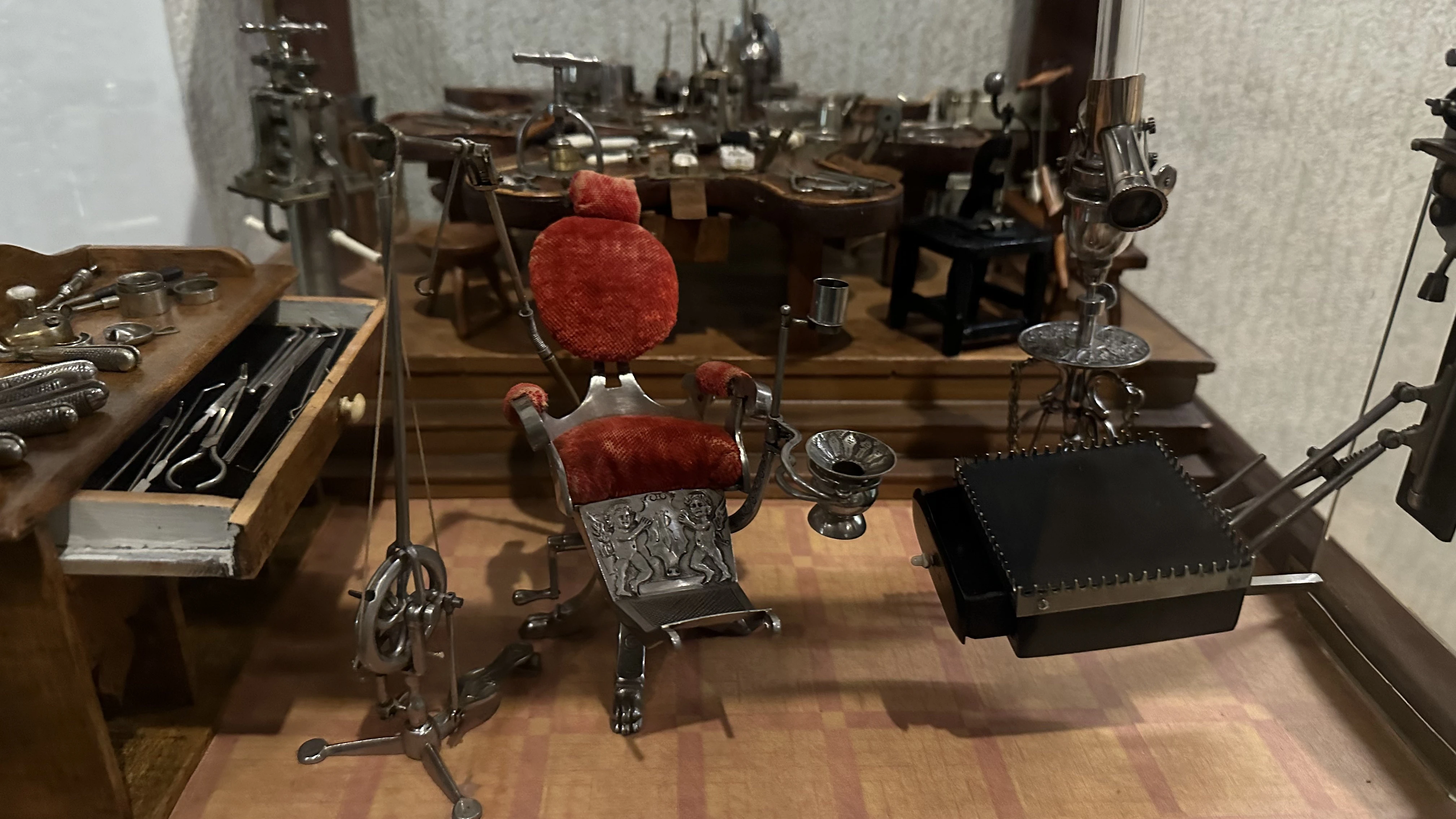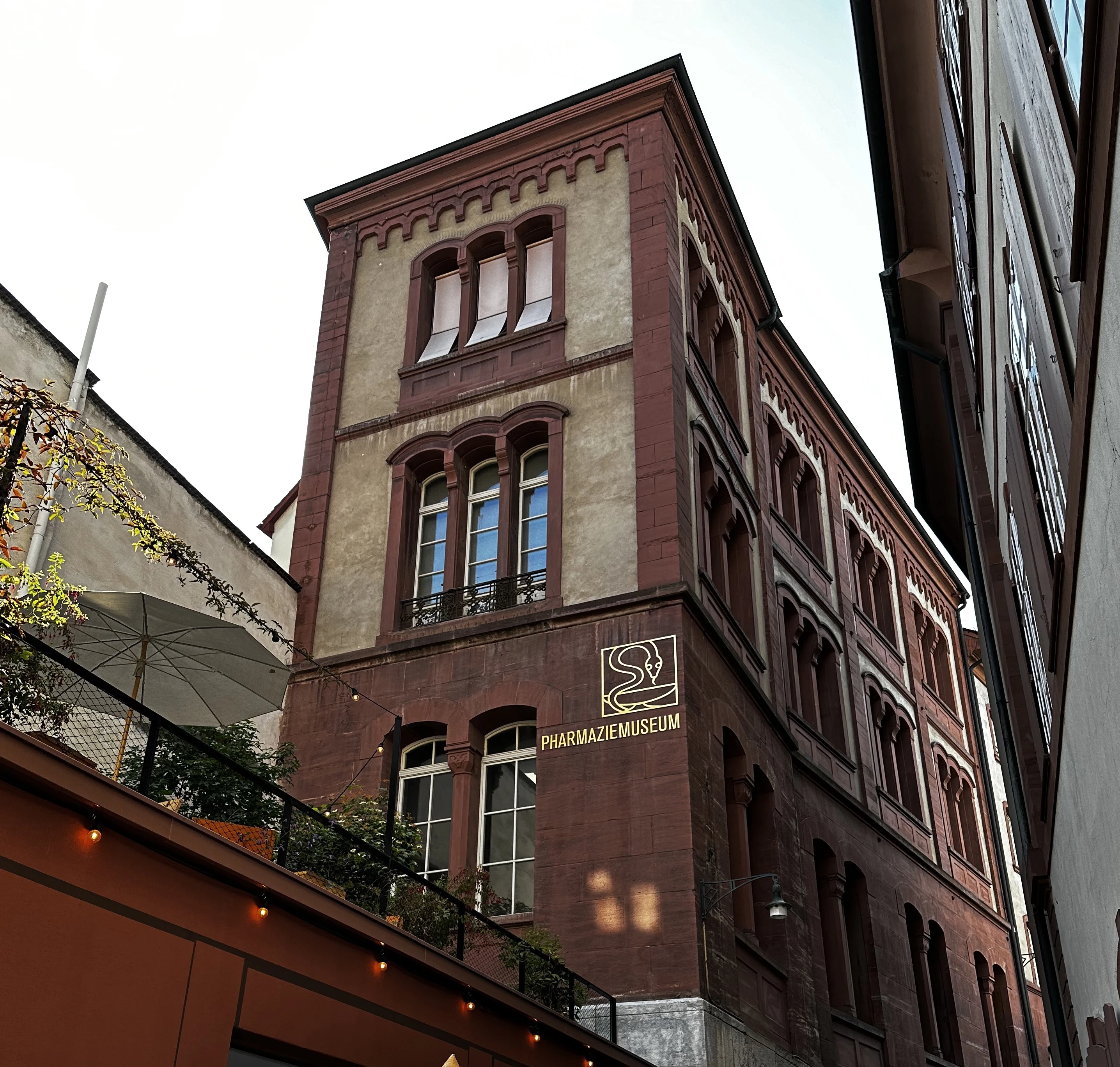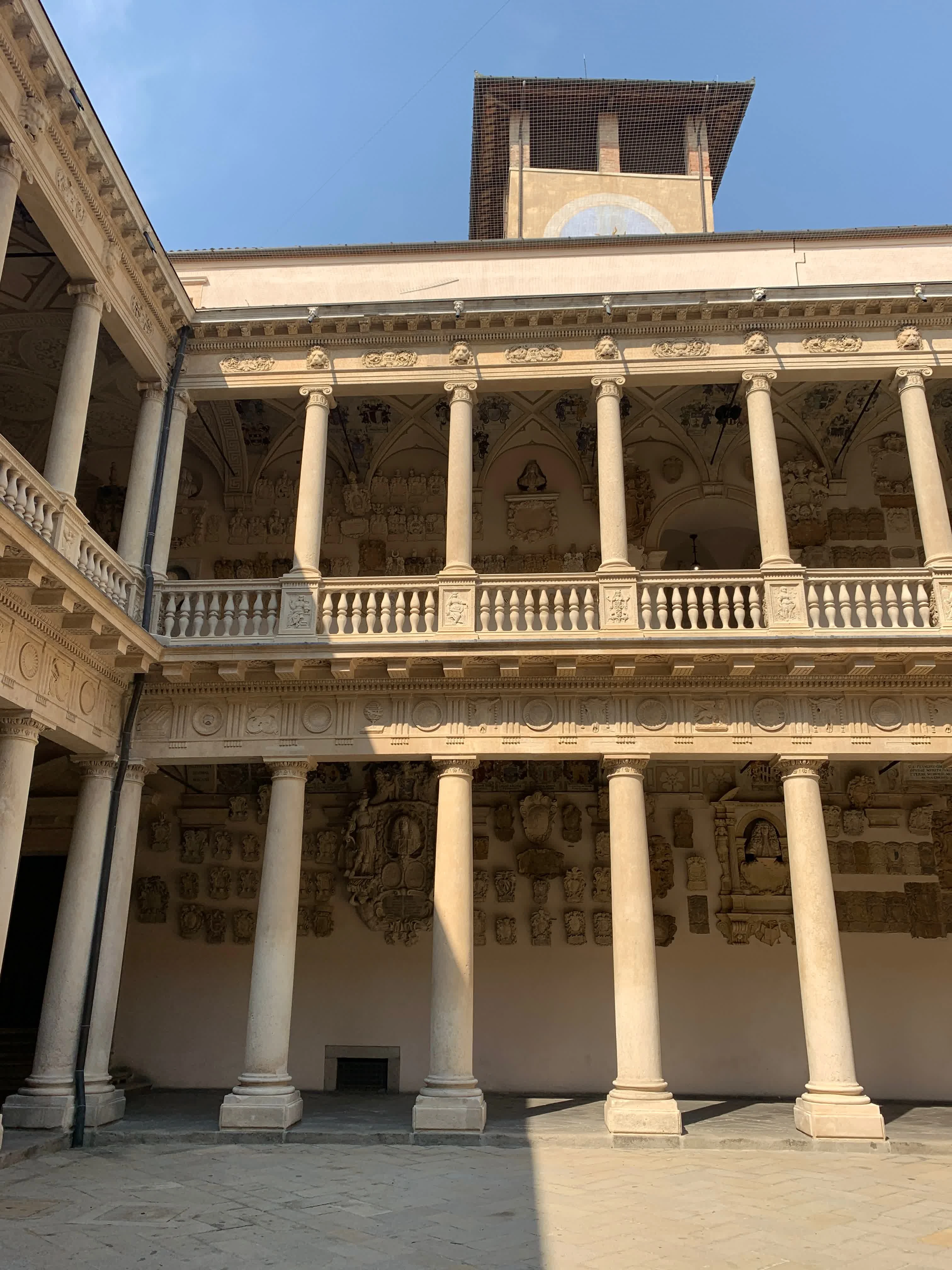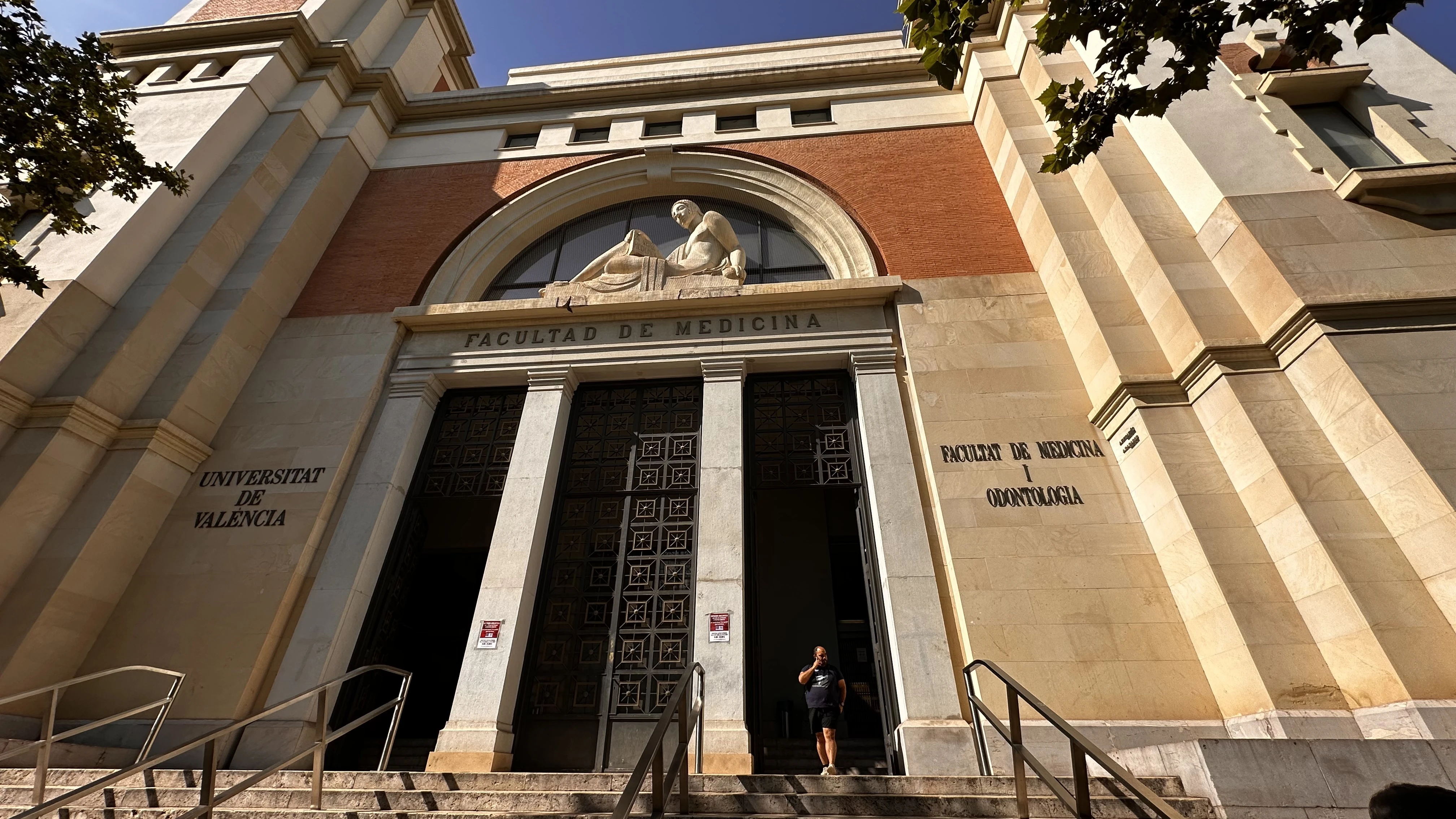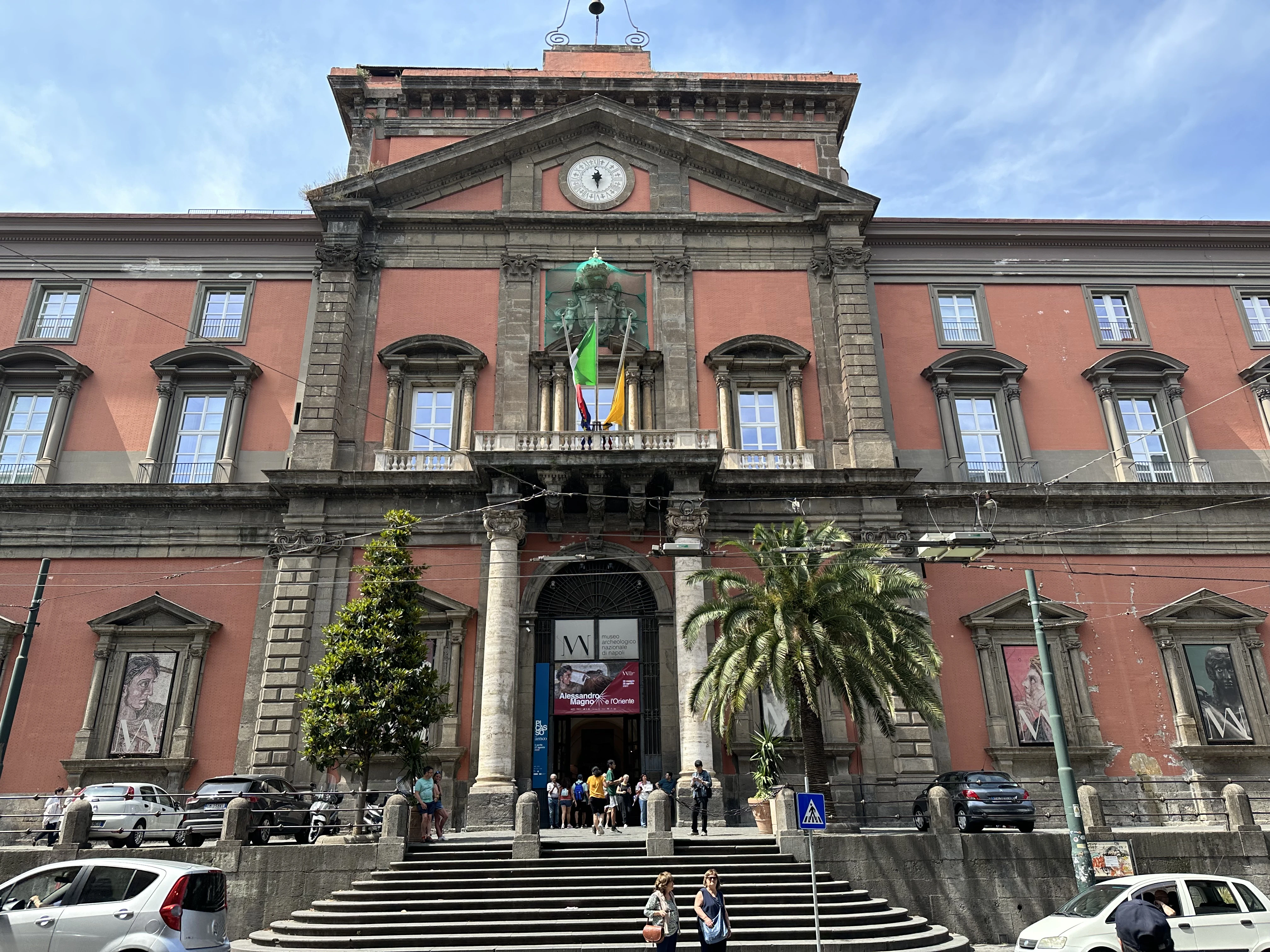Teatro Anatomico in the Palazzo dell’Archiginnasio of the Bologna University
The Anatomical Theater, known as Teatro Anatomico, is just a short walk from Piazza Maggiore, the central square in Bologna. This historic site, nestled within the Palazzo dell’Archiginnasio, is a stone's throw from the location of Europe's oldest university, established in Bologna in the 11th century. Since 1563, the Palace of the Archigymnasium has been the central hub for the "Schools" of the Alma Mater Studiorum, featuring a courtyard encircled by double-story peristyles, characteristic of Italian universities of the period, such as the Sapienza in Rome or Palazzo Bo in Padua.
Currently, the Medical and Surgical Society and the Academy of Agriculture of Bologna take up the ground floor, while the Municipal Library—home to a unique collection of antique manuscripts and incunabula—resides on the first floor alongside the magnificent Teatro Anatomico and Stabat Mater Hall.
Constructed in 1637, the Teatro Anatomico boasts a centrally placed, ornately designed marble table, flanked by wooden railings where dissections were historically carried out. The professor's chair, with its canopy upheld by two "Spellati" statues — carved, skinless figures — stands out prominently. Overhead, the allegorical figure of Anatomy is depicted receiving two gifts, a manuscript scroll and a femoral bone, from an angel. The Anatomical Theater in Bologna stands out as not only a site of significant historical value but also as one of the most visually stunning of its kind.
Standing in the middle of the room, a white Carrara marble table was dedicated for performing public dissections. A showcase in front of the main Chair displays a Latin edition of Galen's works, underscoring his profound impact on medieval and Renaissance medicine. A statue of Galen clutching a book is also present, along with the hall's adornment of carved wood panels and statues of notable physicians such as Hippocrates, Galen, Malpighi. One of those figures, Gaspare Tagliacozzi, celebrated as a pioneer of reconstructive and plastic surgery, notably the "Italian method" of rhinoplasty, is represented holding a nose.
The wooden coffered ceiling crafted in 1645 by Antonio Levanti is embellished with the figure of Apollo, the patron deity of medicine, at the center encircled by artistically carved zodiacal symbols, fourteen constellations. The selection of an astrological theme harks back to the tradition of consulting the stars before undertaking surgical procedures or prescribing medications, aligning with the concept of medicine being influenced by science—a notion widespread across Europe thanks to the Arabs since the conquest of Spain. Astrology was intertwined with medicine, with each body part believed to be protected by a zodiac sign. Astrology remained a subject of study at the University of Bologna until the end of the 17th century.
Each wing concludes with two large halls; one has been transformed into the library's reading room, while the other serves as a congress space, The Great Auditorium, known as the Stabat Mater. It was historically reserved for law students, named Sala dello Stabat Mater to commemorate the premiere of Rossini's Stabat Mater, conducted by Gaetano Donizetti on March 18, 1842.
Information for Visitors
Disclaimer: The information provided below is for informational purposes only. For the most current and official schedule an pricing please refer to the official website.
Schedule of the Anatomical Theater:
- Monday through Saturday: 10:00-18:00
- Sunday: closed
Sightseeing in the library is not allowed.
Entrance fee of 3 euros.
Online ticketing is active on the website https://ticket.midaticket.it/teatroanatomicobologna/Event/19/Dates
Tickets purchased in advance have an additional cost of euro 0,50. There is no refund in case of cancellation.
Exemptions:
- Tourist guides with the identification card
- Journalists with the identification card
- One person per group of at least 10 people
- Primary and secondary school classes
- Two chaperones for each school group
- Young people up to 18 years old
- People with disabilities and their helpers
- The ICOM (International Council of Museums) partners showing the membership cardv
- The subscribers of the Musei Metropolitani Bologna Card
